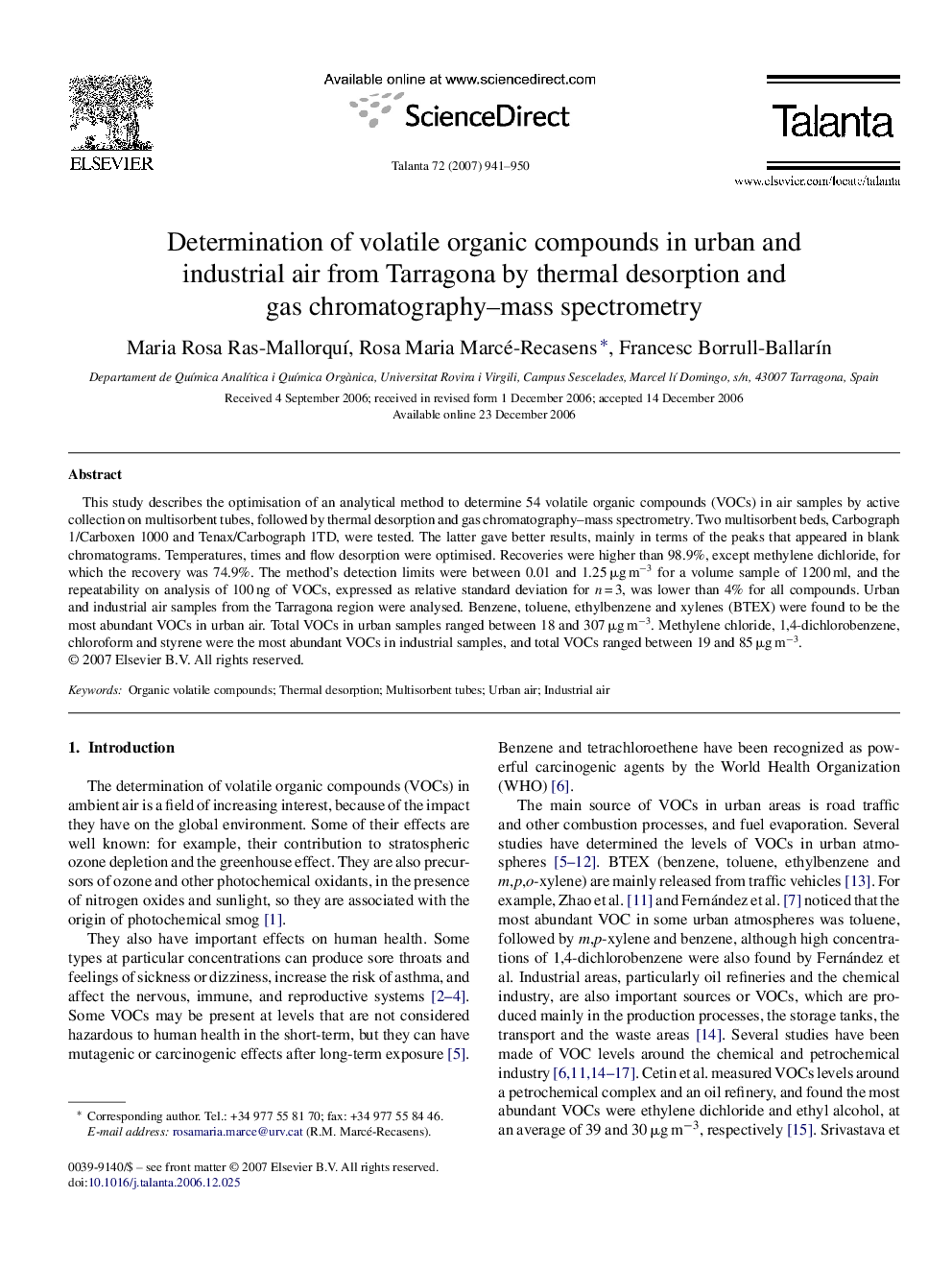| Article ID | Journal | Published Year | Pages | File Type |
|---|---|---|---|---|
| 1244981 | Talanta | 2007 | 10 Pages |
This study describes the optimisation of an analytical method to determine 54 volatile organic compounds (VOCs) in air samples by active collection on multisorbent tubes, followed by thermal desorption and gas chromatography–mass spectrometry. Two multisorbent beds, Carbograph 1/Carboxen 1000 and Tenax/Carbograph 1TD, were tested. The latter gave better results, mainly in terms of the peaks that appeared in blank chromatograms. Temperatures, times and flow desorption were optimised. Recoveries were higher than 98.9%, except methylene dichloride, for which the recovery was 74.9%. The method's detection limits were between 0.01 and 1.25 μg m−3 for a volume sample of 1200 ml, and the repeatability on analysis of 100 ng of VOCs, expressed as relative standard deviation for n = 3, was lower than 4% for all compounds. Urban and industrial air samples from the Tarragona region were analysed. Benzene, toluene, ethylbenzene and xylenes (BTEX) were found to be the most abundant VOCs in urban air. Total VOCs in urban samples ranged between 18 and 307 μg m−3. Methylene chloride, 1,4-dichlorobenzene, chloroform and styrene were the most abundant VOCs in industrial samples, and total VOCs ranged between 19 and 85 μg m−3.
